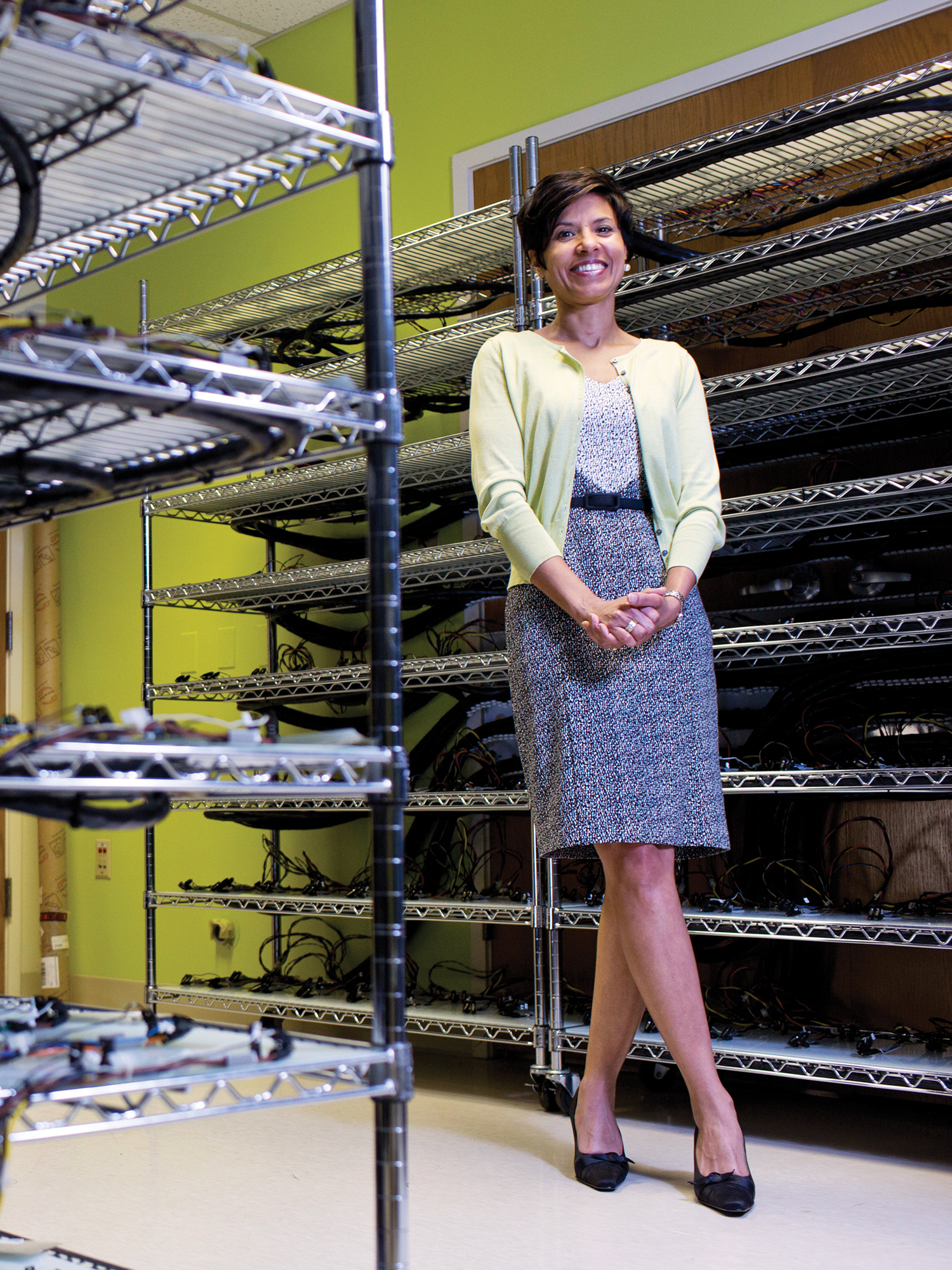Survival in the Battery Business

The advanced battery market has seen many companies stumble in recent years. Startups with promising technologies for storing renewable energy or powering electric cars failed to find customers quickly enough (see “Why We Don’t Have Battery Breakthroughs”). But Sakti3, the maker of a novel solid-state battery, got a big boost this year when the British appliance giant Dyson said it would invest $15 million in the company and incorporate Sakti3’s batteries into its products. Because it dispenses with the liquid electrolytes used in most batteries, which can cause chemical reactions that lead to overheating, a solid-state battery doesn’t require bulky cooling systems and thus can deliver the same amount of energy in a much smaller package. Given that this could lead to electric cars with longer ranges than the ones available today, Sakti3—one of this year’s 50 Smartest Companies—also counts General Motors as an investor. Founder Ann Marie Sastry spoke to MIT Technology Review’s senior editor for energy, Richard Martin.
Why would a vacuum cleaner company invest in a battery maker?
Because they need better batteries. What we’re doing is building batteries in a very different way, such that we’re able to generate very interesting properties. Our prototype systems today provide double the energy density of what’s on the market. Even more important is that our technology offers a platform on which to continuously improve.
Why couldn’t that happen with today’s dominant battery technology?
The liquid-electrolyte systems that have been selected up to this point by manufacturers and the marketplace have been pursued for one principal reason: high energy density. But they have clear limitations in terms of weight, expense, safety, and so on. The continuous improvement in lithium batteries has enabled safe operations [of an electric car, for example] but at a high cost, and provided energy density that’s appropriate for some ranges but is not equivalent to an internal–combustion engine. To continue to develop on that platform, as with any manufacturing process, is going to result in marginal gains at best.
At some point in any industrial process you have to ask, “Are we on the right platform?” We needed to eliminate the liquid-electrolyte system while still producing [at] a low cost and enabling out-of-the-gate safety. Our aim is no less than changing the way battery cells are made globally.
So what role might your batteries play in electric cars over the next, say, three years?
The automotive market is enormously important to us. We knew that we would probably have to commercialize first in markets with fewer barriers to entry, and with smaller [batteries]. Over the next three years, the work we are doing in the other markets will build our technology to address the rigorous demands of automotive markets—which is why we actually started the company in the first place.
Why solid-state as opposed to other battery chemistries?
The reason is that we see all the verticals for battery applications increasingly converging around the same needs: for portable systems with low environmental impact, high energy density, and safe, stable operations. Solid-state, if mastered, enables portability of even grid-scale systems, which we think will become increasingly important as renewables make greater incursions into grid power.
Portable systems for grid-scale power? That almost seems like an oxymoron.
I know! But think about Japan, for instance. People’s houses in Japan are really small. If you tried to take a garage and fill it with batteries, that’s not really practical. You need a storage system that can address different renewable sources, and the challenge is to produce a system that [can be] exactly optimized to the energy generation technology that is pertinent. Our thinking was that it should be small, agile, and customizable.
We’re trying to follow what’s been successful in technology advances in general: there are no mainframes anymore—everyone has agile, high-performance laptops. Energy storage shares many of the same principles.
How have you stayed afloat while other battery startups fell by the wayside?
We focused with great intensity on making the technology work on a low-cost platform. There are some businesses that pivot and change in response to market shifts, and that’s very often a great strategy. We were extremely stubborn—which can also be useful at times.
Keep Reading
Most Popular
Large language models can do jaw-dropping things. But nobody knows exactly why.
And that's a problem. Figuring it out is one of the biggest scientific puzzles of our time and a crucial step towards controlling more powerful future models.
How scientists traced a mysterious covid case back to six toilets
When wastewater surveillance turns into a hunt for a single infected individual, the ethics get tricky.
The problem with plug-in hybrids? Their drivers.
Plug-in hybrids are often sold as a transition to EVs, but new data from Europe shows we’re still underestimating the emissions they produce.
Stay connected
Get the latest updates from
MIT Technology Review
Discover special offers, top stories, upcoming events, and more.